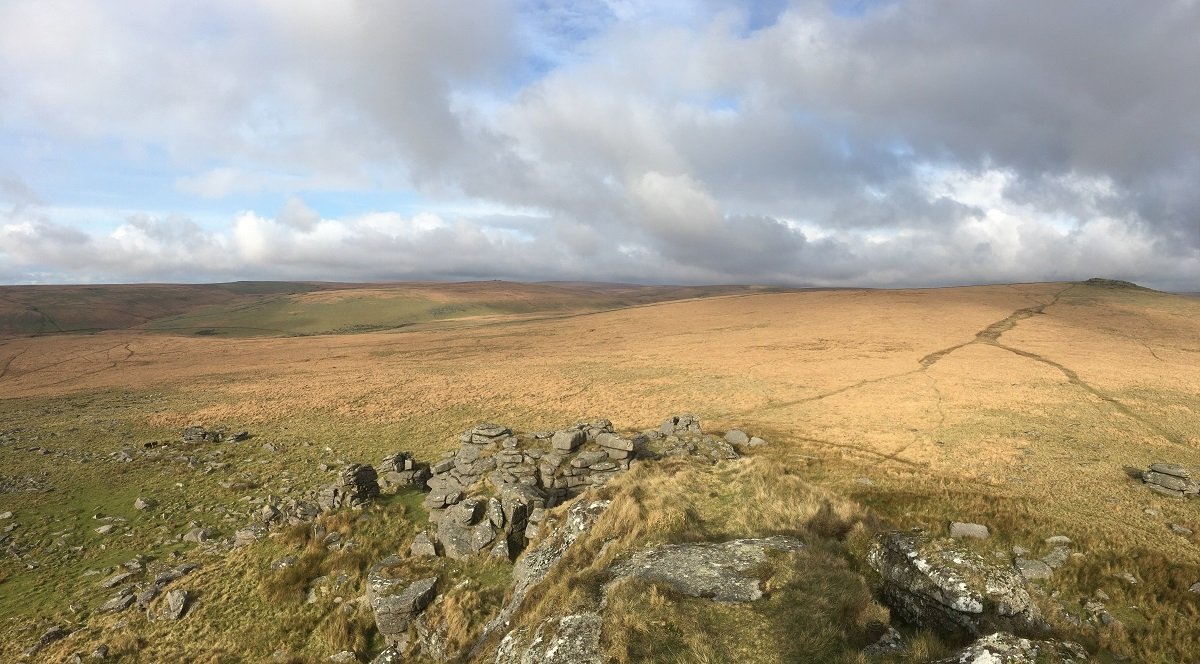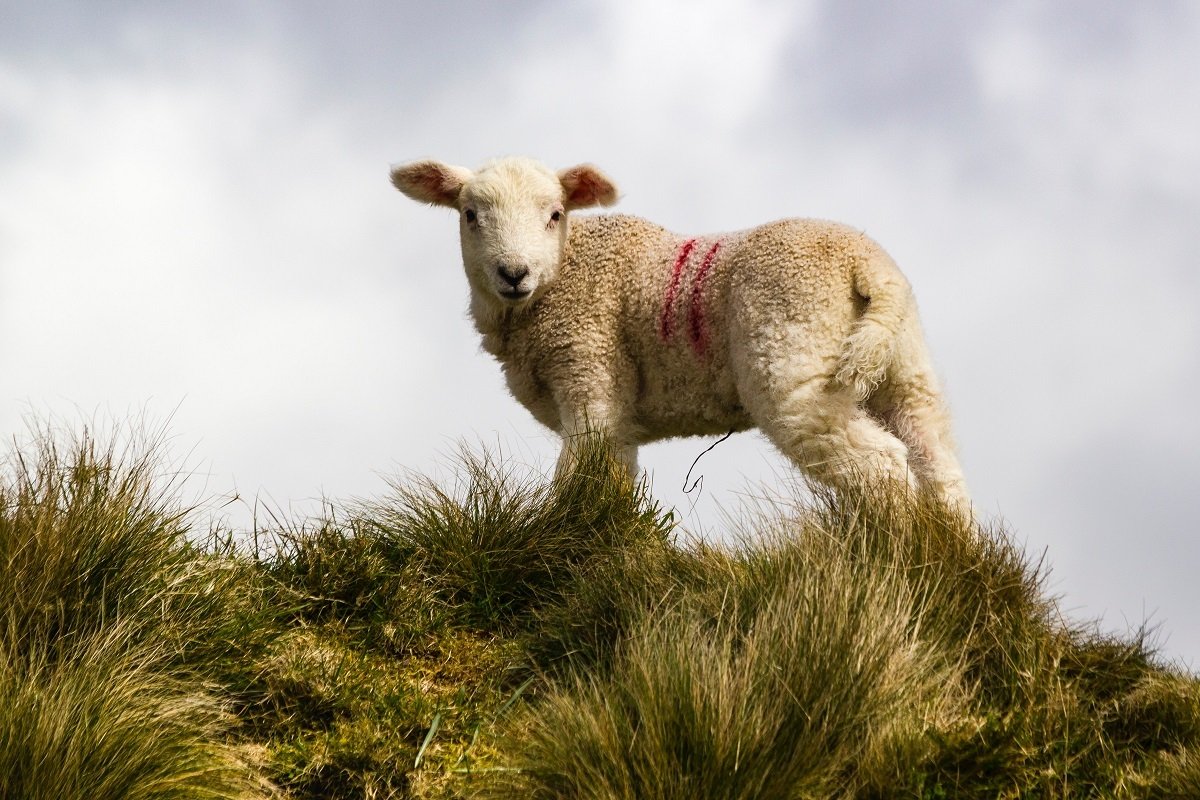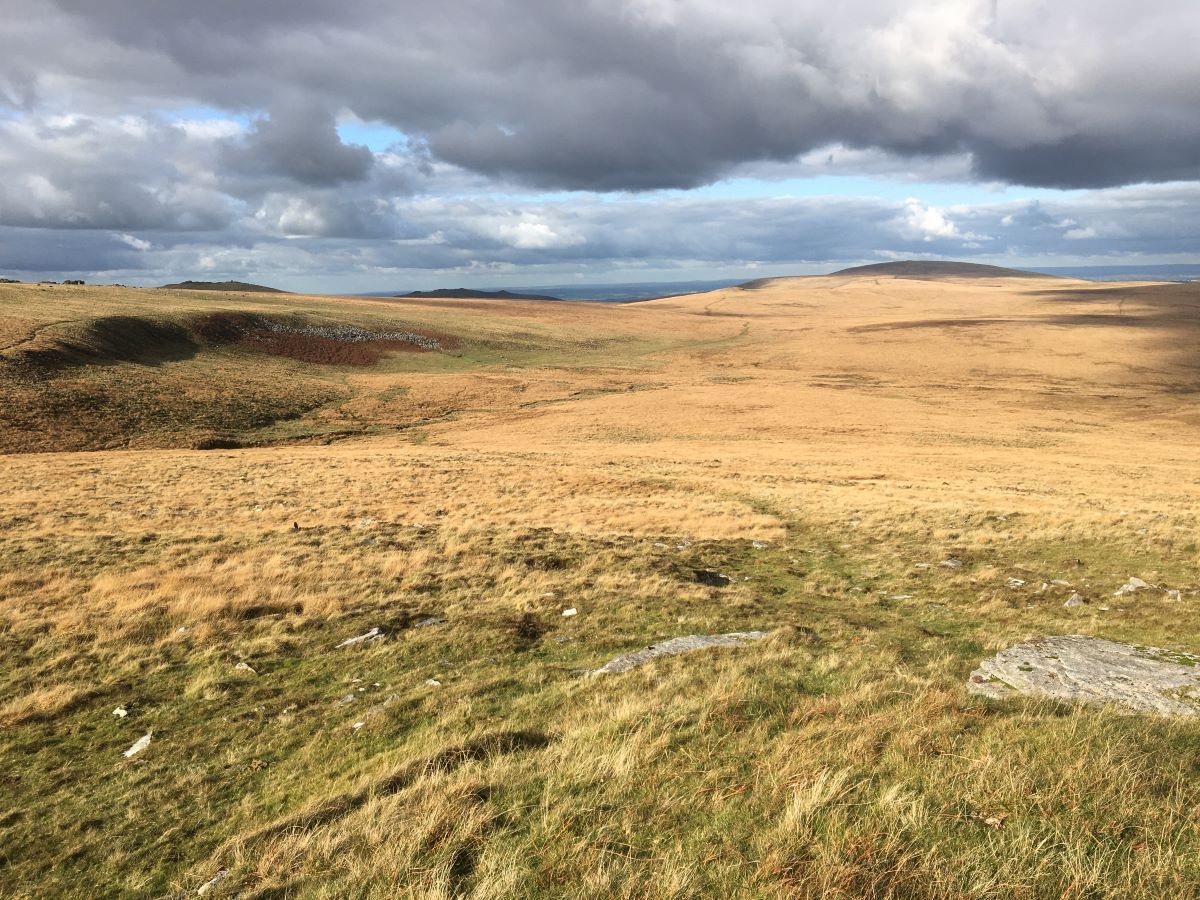
In the second of three articles, environmental campaigner Tony Whitehead considers how Dartmoor’s nature came to be in such a poor state.
In part one, I paid attention to two of Dartmoor’s key wildlife habitats: the blanket bogs and upland heaths. Over the past 150 years, Dartmoor’s blanket bogs were cut for peat, drained for agricultural ‘improvement’, and remorselessly pounded by the military. Combined, this left once healthy wet bogs eroded. Despite efforts in a few places at restoration, led by the national park authority, most of these vital peatlands remain today in a degraded state.
On the surrounding heaths, significant pressure came from changes in the grazing. For centuries, Dartmoor’s ecological value has been maintained by grazing animals: cattle, ponies and particularly sheep. Not too many, not too few, always within the land’s natural limits. It is a pastoral landscape where commoners hold rights to share grazing across the commons.
Up until the last century, Dartmoor was a place of summer grazing, with traditional breeds making the most of the warmer months, then taken off in winter. Under the right levels of grazing, in summer, the heather and bilberry flourished and with it a whole host of other creatures. However, the introduction of hardier animals over a century ago, such as Scottish blackface sheep and Galloway cattle, changed the tradition. Now animals could be outwintered. And post-war domestic agricultural policy supported these changes.
The profitability of hill farming on Dartmoor has long been marginal. In a 2017 presentation given at the national park headquarters, a slide was shown to illustrate the finances of an “extreme hill farm on Dartmoor”. Such a farm can expect to make just short of £20,000 from livestock, but spend £30,000 in costs. Without additional financial support, many of these businesses would have failed long ago. This is a crucial feature of farming on Dartmoor.

In acknowledgement of their precarious finances, in 1949, taxpayer subsidies began to be paid to hill farmers. The more animals you had, the more money you were given. These ‘headage’ payments continued when the UK joined the European Economic Community and the common agricultural policy in the 1970s.
Dartmoor farmers made the most of the new cash, brought in more animals, and the moor began to strain under the effects of overgrazing. In 1952, there were 44,000 sheep on the commons. By 1994, there had been a 200 per cent increase to 132,000.
The increase in grazing pressure from animals, and particularly their presence in winter, changed the nature of the vegetation on the moor. As the national park authority and English Nature stated unambiguously in the 2001 report The Nature of Dartmoor: “Much upland heathland has been lost to grass moor due to heavy grazing and/or frequent and extensive burning.”
How did this happen? First, the sheep, especially in winter, when there is little else to eat, thoroughly overgrazed the heather. Second, the graziers needed to encourage the ‘sweeter grasses’ and so deliberately suppressed the woody shrubs, such as gorse and heather, by regular burning, or ‘swaling’. This also had the effect of encouraging the spread of the much rougher purple moor grass, Molinia, which was of limited grazing quality. But, as botanical surveyors wrote as early as 1972: “Molinia is strikingly prevalent. It is a fire-climax vegetation from which heather has been eliminated by repeated burning.”
Where heathers used to flourish, purple moor grass now dominates huge parts of the moor, a species-poor desert bleached of its former vibrancy. And, as if it needed any extra help, moor grass growth has also undoubtedly been encouraged by the increase in atmospheric nitrogen, a side effect of intensive agriculture and exhaust emissions.
The loss of heath to moor grass is one of the key reasons for the ‘unfavourable’ status of the moor’s protected sites. At the same time, the end of the traditional use of bracken for livestock bedding, combined with the effects of increased burning, helped this hardy, invasive fern thrive and dominate many a hill slope, again suppressing the traditional heathland. This damage was a perverse consequence of policies designed to support farmers. Not only did the agricultural subsidy system encourage damaging changes in Dartmoor’s vegetation, it also created a benefits dependency culture in the farming community.
Two things brought matters to a head in the early 2000s. In response to growing butter mountains and wine lakes, EU production subsidies were changed and headage payments ended. Instead, farmers now received payments based on the size of their land holding. This was still substantial, but at least the incentive to keep as many animals as possible wasn’t quite so strong. At the same time, the UK was hit with foot and mouth disease. With these influences, livestock numbers started to decline.
But it was too late for the heaths, and many grass moors simply grew rank through undergrazing. A decline in shepherding, which would otherwise have kept stock more widely dispersed, meant that parts of the moor became undergrazed, whilst others remained overgrazed.
Parallel to this, the 1990s saw domestic agricultural policy begin to acknowledge the influence farmers had with respect to the natural world. Funded again by the taxpayer, with treasury money matching EU subsidies, farmers could now apply to enter into agreements to manage their land more sensitively for nature.
These agreements targeted priority habitats and species under Dartmoor’s new status as an environmentally sensitive area (ESA). They were advised by English Nature, soon to become Natural England (NE), the government’s scientific advisory body on nature conservation. Whereas previously the commoners had been dependent on production subsidies, they now became equally reliant on taxpayer support to restore the damage wrought over the previous decades by those very production subsidies.
Most of the commoners’ associations gradually entered into agreements, but, from the start, relationships between the commoners and the statutory nature conservationists were strained. The commoners complained that they didn’t know what they were expected to provide. They also felt they were not listened to. As one commoner put it to the Moorlander in October this year, referring to NE staff: “These people out of university think they know it all, think they know best how to manage the land we’ve been managing for years.”
Given the state of nature on the commons, it would be pertinent to ask if the commoners are really the best people to deliver environmental schemes. They are, after all, farmers, not ecologists. There is often talk of ‘traditional hill farming’ and Dartmoor being a ‘cultural landscape’, and yet such nostalgic descriptions belie the simple fact that the landscape is today as much a product of failed post-war agricultural policy as anything else.
Commoners hold valuable skills in managing stock and their voice is, of course, an important one. But it could be reasonably argued that they are only one group amongst many – such as local communities and the visiting public – with equal rights to hold a view. Represented by the Dartmoor commoners’ council, farmers were given an increasing say in the scheme design, and a ‘Dartmoor Vision’ was produced in 2005. Agreed by all parties, it was a topographical presentation of what Dartmoor should be in 2030.
In the wake of the vision, ESA agreements gave way to new agri–environment agreements in the 2000s. Again, these were targeted to priority habitats, especially in ‘higher level stewardship’. The aim was to return Dartmoor to a situation where the bogs were restored and there were “extensive areas of heather moorland, dominated by heather, particularly Ling”. This relied on detailed agreements with landowners and commoners to achieve the right stocking rates and timings, and set restrictions on swaling.

The last major round of agreements started in around 2010. Summaries of each agreement can be found on the government’s ever handy online map, and details of year on year payments can be found here, where anyone in England can access what they (as the taxpayer) are paying their local farmer.
If you add up all the latest stewardship agreements with all the commoners’ associations on Dartmoor, you find the total cost to the taxpayer over ten years is £32,563,633. And this is in addition to the millions the farmers received in their basic farm payments.
These agreements are in place to ensure the restoration of Dartmoor along the lines of the Dartmoor vision, using a national government subsidy scheme. Nothing else. But as we know from the previous article in this series, they are simply not delivering. Of the Dartmoor special area of conservation, which should be the crown jewel, and covers around a quarter of the national park, just 6.62 per cent is currently in ‘favourable condition’.And the condition has not improved over the past decade, despite the public investment of £32m.
For 40 years, taxpayer-funded agricultural policy laid waste to nature on Dartmoor in order to support marginal farm businesses. And for the last 30 years, taxpayer-funded agricultural policy has been enacted to try and sort out the mess, whilst keeping marginal businesses going. And yet Dartmoor remains in a parlous state.
It’s a sorry state of affairs all round. Many farm businesses, already on the edge, face a hugely uncertain future as we head for a no-deal or poor-deal Brexit. To survive, the commoners’ reliance on the taxpayer is only set to grow. Consider this alongside the fact that food and farming only contributes 10 per cent to the national economy and yet has a huge influence over the natural environment and 69 per cent of the UK’s land. As we enter a time of economic hardship, where there needs to be harsh scrutiny of how our tax contributions are being spent, we deserve to see positive results for the environment in return for our investment.
So why are the schemes failing? I will return to this in the final part of this series, because attempting to understand this helps us think about how things could be done differently.
The whole thing needs a radical rethink. And it starts by asking a very simple question: what precisely is farming on Dartmoor for? Only by answering this, can we start to think much more creatively about who should, could and might best manage the land in the future. We will consider this in part three.




